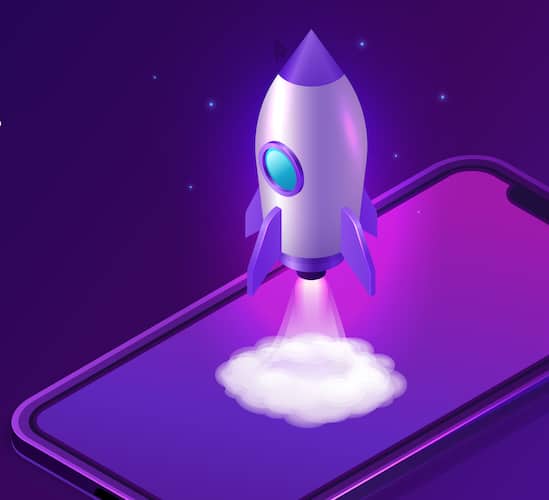AI app development may be hard to define. Here’s a little story of why.
About a year ago, I went to my bank to close the account (it froze my money for buying crypto). As I was entering a lounge waiting room, I got a notification from a banking app with a bank assistant’s name who would attend to me shortly. And in less than a minute, a smiling clerk, who already knew my name and why I came, welcomed me.
As it turned out, they had a stationary camera that recognized my face when I entered and notified the clerk and me via mobile apps. Before that, I had completed a face scan (à la Apple’s FaceID) in their banking app “for better security and improved customer service.”
I’m pretty sure many of us have had similar experiences as AI is becoming more widespread and customer-friendly. And here’s the question.
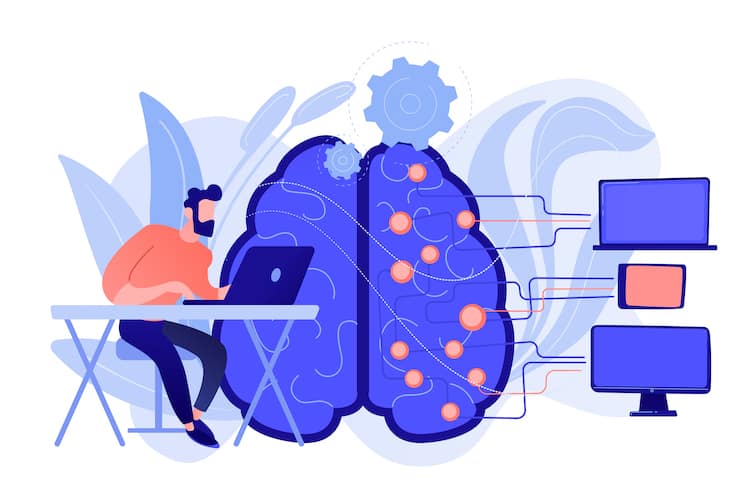
Do I thank mobile AI development for that pleasant experience? Or did the banking apps act purely as interfaces for an AI engine that runs somewhere in the cloud? The face scan seemed to have taken place on the smartphone, but how did the cam recognize me without a server in the middle?
In my humble opinion, if we interface with AI via a mobile app, regardless of where its algorithms reside, we deal with an instance of mobile AI.
Whether you care about these nuances or answer such questions differently, please join me in discussing the best practices of developing mobile AI applications.
Top Takeaways:
- One of the critical early steps during artificial intelligence application development is validating AI algorithms to ensure we get relevant output.
- As long as we can squeeze image or text recognition, NLP (natural language processing), automated data analysis, and other AI use cases into a mobile device — we plan to build an artificial intelligence app.
- AI data models powered by smart algos can be continuously improved and live independently of a mobile app shell. Therefore, an appropriate data pipeline setup becomes necessary to keep enhancing AI accuracy.
Table of Contents:
1. How Is AI Used in Mobile Apps?
2. Top Industries that Benefit from AI Apps
3. Best Mobile Apps That Use AI
4. Benefits of AI Mobile Apps for Business
5. 8-Step Guide on AI Application Development
- Step 1: Discovery
- Step 2: Proof of Concept
- Step 3: Prototype
- Step 4: Design
- Step 5: Build the Front End
- Step 6: Deployment
- Step 7: Release
- Step 8: Maintenance
6. How Much Does it Cost to Make an AI App?
7. How Topflight Can Help with AI App Development
How Is AI Used in Mobile Apps?
Let’s keep in mind that no matter where AI lives (cloud vs. on-device vs. hybrid), it’s still just a bunch of smart algorithms. Yes, they are far from simple and cost a lot (Microsoft’s $10b investment in OpenAI, anybody?). Still, at the core, AI is pure algos. And they have a lot to show for mobile platforms.
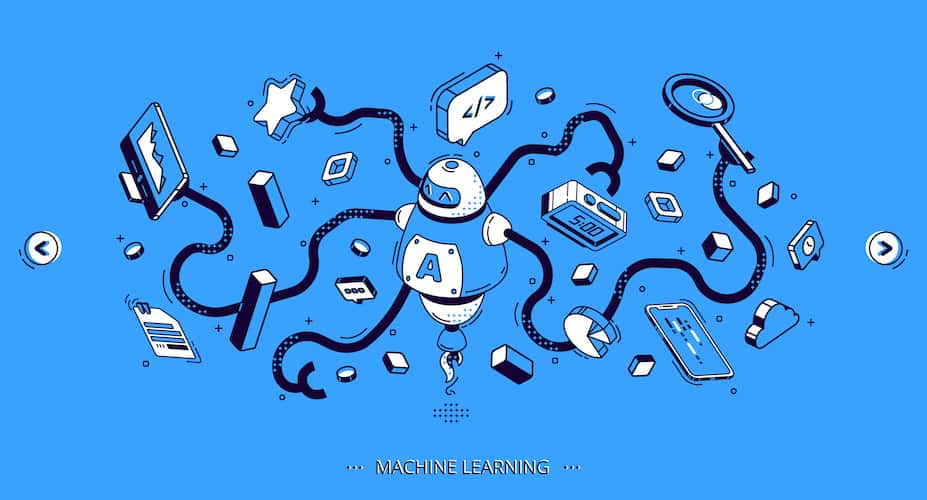
I won’t bother you with the differences between deep learning, neural networks, supervised vs. reinforcement learning, and other abstract matters of artificial intelligence app development.
I bet you have a particular use case that makes sense for your business, and you couldn’t care less about the specific type of AI in your app as long as users are happy.
Here are a few most exciting applications of AI that we enjoy on our phones and other mobile gadgets every day:
Image and object recognition
I love the ease of trying on new shoes with the Wanna Kicks app. Check this out:

They detect my feet (AI), then overlay a shoe model (AR) that moves with the feet — a clever use of object recognition! We have the technology to do this with images (e.g., CT scans) and video in real-time.
How we use this tech is a different story and totally depends on our target audience’s needs.
Text recognition
Same as object detection, but this time for text: translating, copying a chunk of writing, or doing other cool stuff.
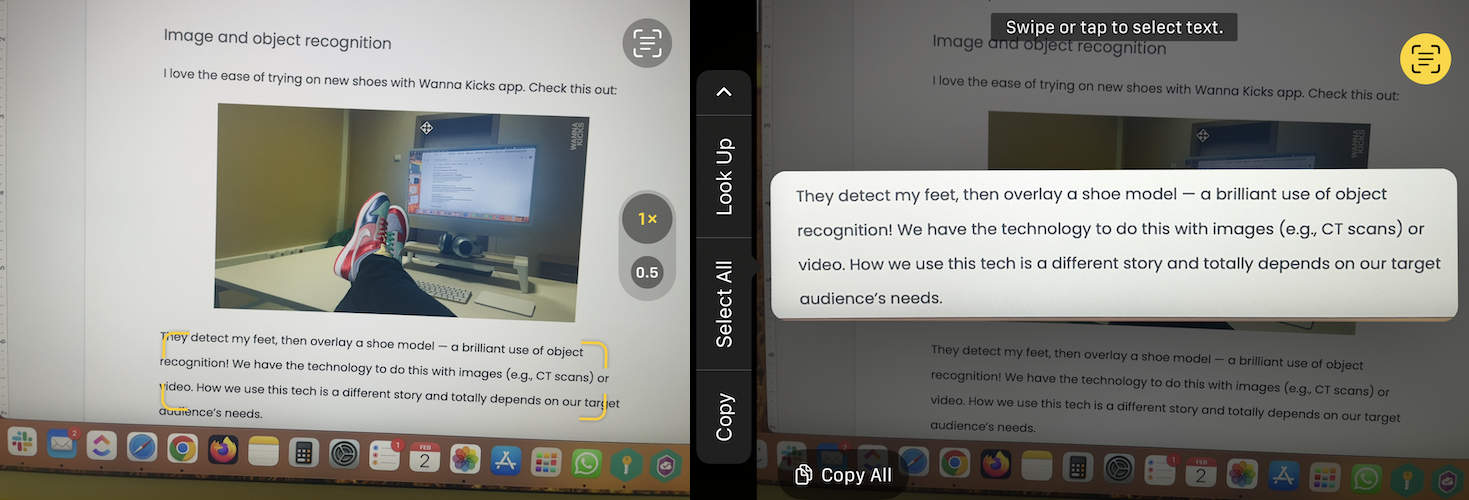
Speech-to-text and the whole NLP saga
People love getting things done by asking voice assistants like Siri, Google Assistant, Alexa, and other speech recognition engines. And voice assistants are just the tip of the iceberg.
Think about a virtual nurse who can detect the patient’s mood mimicking human intelligence. By the way, here’s a nice read on how to develop a natural language processing app.
Optimal routes
When we hail a taxi on our smartphones, we always know where the cab is and how fast it’ll arrive. Or when we drive home, we might check an optimal route to avoid roasting in a traffic jam.
Also Read: Medical LLM: Bridging the gap between technology and healthcare
Personal recommendations
Finally, knowing our tastes and preferences is a huge win for upselling and satisfying customers. Although, I have to admit I’m still skipping quite a few tracks on Apple Music and hate to fiddle around looking for these Love and Dislike buttons.
Mobile AI has many other use cases, like intelligent chatbots, predictive text, and even automatic writing and drawing.
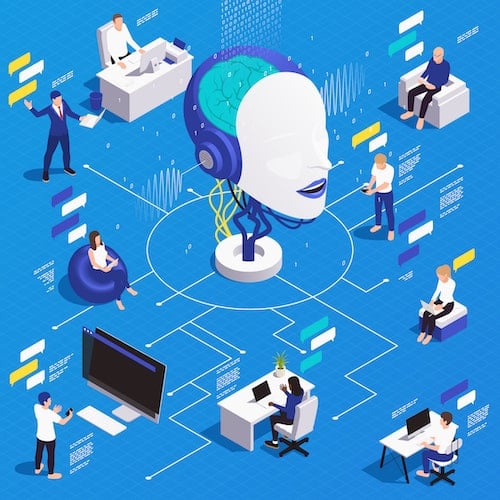
The bottom line is that AI is ideal on mobile for pulling massive amounts of data (not necessarily at once), analyzing it, and providing a relevant output. Think about all the sensors in our mobile devices and wearables, and you’ll get, for example, how Apple cracked gait steadiness calculations.
Finally, AI can keep learning from user interactions if the use case suggests it’ll benefit customers.
Top Industries that Benefit from AI Apps
I don’t know about you, but I always skip these overly general, boring passages in blogs, maybe pausing on Fintech and Healthcare sections for a bit, but only out of curiosity. So I’ll be brief.
If you plan to create an AI app, you’re likely targeting one of the following areas.
Fintech
Typical use cases:
- Fraud prevention
- Prediction (e.g., budgeting for consumers; underwriting for businesses)
- Robo trading
- Personalization and customer support (works universally for all industries)
Healthcare and fitness
Typical use cases:
- Diagnosis & prescription
- Billing and coding (AI medical coding software offers unparalleled advantages, from reducing manual work to improving coding accuracy)
- Medical image scans
- Drug discovery
- Real-time pose estimation
- Case prioritization
Find out more about artificial intelligence in healthcare in a dedicated blog.
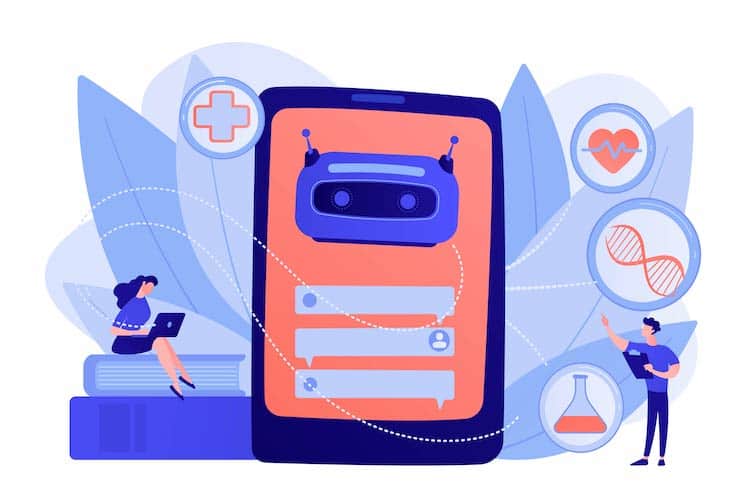
Entertainment
Typical use cases:
- AI opponents in games
- recommendations
- AI + AR/VR
Transportation and delivery
Typical use cases:
- optimal routes
- time of arrival
- license plate recognition
Education
Typical use cases:
- AI-assisted grading
- smart content production
- personalized learning paths
- student performance analytics
Energy and manufacturing
Typical use cases:
- quality control
- inventory management
- product design
- machinery diagnostics
Best Mobile Apps That Use AI
First of all, when you hear Siri or Google Assistant as examples of the best AI mobile apps, stay away from the source. They have no idea what they are talking about: Siri and its siblings have long ago become AI platforms, just like the famous IBM Watson.
Here’s how you spot a platform — mobile (and web) apps can hook into a platform’s intelligent capabilities (via APIs or SDK) and offer their features via the platform’s UI. So, for example, when you send money to a friend with your banking app by asking Siri, you are not using a Siri app; you’re using an AI platform.
Second, instead of googling for random mobile apps with AI (it’s hard to beat Wanna Kicks from the customer-centered perspective, and I can’t talk about the cool AI stuff we develop for doctors and million-raising enterprises), let’s thumb through the AI-savvy winners and finalists of the 2022 Apple Design Awards.
- Procreate
Like Photoshop for painting, but uses AI for applying smart filters on the fly (image recognition and enhancement; probably via a neural network)
- Cibo
Finds the pictures of the food from a menu (text recognition)
- Noted․
Note-taking app (audio and text) that cuts out silences and long pauses when listening to notes.
- Active Arcade
A game that recognizes your moves during the gameplay (similar to what we do here in an RPM physiotherapy healthcare app).
It’s a good idea to check out these apps to spot a few best practices that may help us build an AI app towering among competitors.
Benefits of AI Mobile Apps for Business
Businesses always look for ways to produce more while spending less. And AI is a great tool to help with that, whether we want more intelligent and valuable insights, products, or user engagement.
All we need is to spot an opportunity and develop an AI application that helps us capture it.
The cost reduction usually comes because we produce things faster by replacing manual work.
In a nutshell, AI and data science help businesses with the following:
- faster analysis of massive amounts of data
- better decision making
- enhanced customer engagement
- increased customer satisfaction
- less manual labor
- lower operating costs
8-Step Guide on AI Application Development
What specific steps do we need to take to create AI applications? The sequence for building AI apps differs a little from the typical software development routine when we research our TA, prototype, build, test, deploy, and maintain.
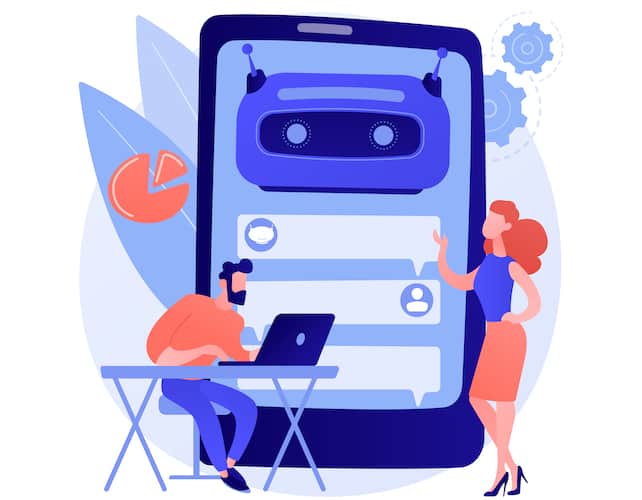
That’s because, with AI software (mobile or not), we need to add an extra step for AI development. As you probably know, an overwhelming number of AI mobile apps are just mobile front ends with cloud-based AI slapped on top of them. And so when building a mobile AI app, we follow the same straightforward routine of making a mobile app while adding a little flavor — AI engine development.
Anyways, let’s not pretend we can beat the train and instead go through all the steps one by one. Here’s how we make AI applications: Please review a summarized 8-step process to guide you through AI application development, from discovery to ongoing maintenance:
| Step | Description |
|---|---|
| 1. Discovery | Define business goals, target audience, MVP features, and tech stack to align with customer needs. |
| 2. Proof of Concept | Validate AI models using test data to ensure they produce satisfactory results before proceeding. |
| 3. Prototype | Create a clickable prototype focusing on critical screens to refine UI/UX through user feedback. |
| 4. Design | Complete all screens and arrange UI assets into a design system for seamless development. |
| 5. Build | Develop the app’s front end, integrate AI models, and set up DevOps for continuous testing and updates. |
| 6. Deployment | Launch the app in a production environment and conduct final tests to ensure performance stability. |
| 7. Release | Publish the app on app stores or beta platforms and address any review or distribution challenges. |
| 8. Maintenance | Monitor performance, update features, and refine the app based on user feedback and analytics. |
Step #1: Discovery — describing what we want to build
Discovery is probably the only thing that never changes, regardless of the type of software we’re building. We need to know our customers and their needs. Aligning these needs with our business goals is how we’ll get traction.
Ideally, the outcomes of this stage will include the following:
- formalized business goals
- 1-2 key features for the MVP (minimum viable product)
- strategic product roadmap
- tech stack (approximations, there are too many choices)
Of course, if we don’t have a tech-savvy partner, we could simply describe our target audience and its needs and state our goals. Let’s say we want to triage patients with minor symptoms two times faster by using a chatbot and let nurses and other personnel assist elsewhere instead.
That’s OK for AI-driven projects to start with such general-sounding goals. A qualified partner offering machine learning development services will spin this for you into something more tangible, including architecture, programming languages, etc.
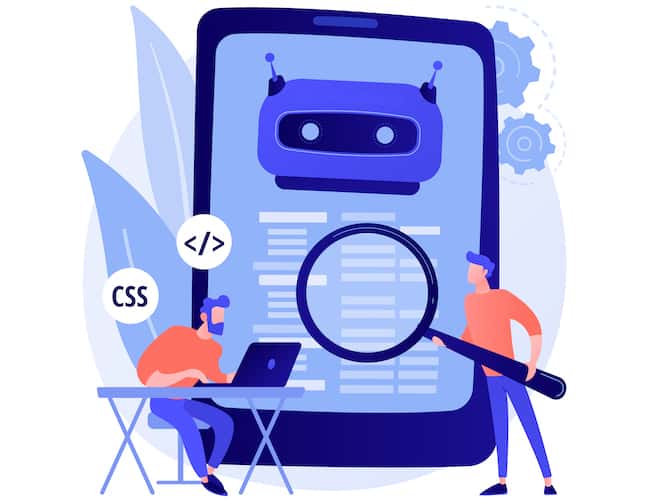
Step #2: Proof of concept — validating AI models
This extra step is typical of AI-powered software development — creating a proof of concept. Typically, we’d proceed straight to prototyping, but with AI mobile apps, we first make a PoC.
This proof of concept will have zero or very rudimentary UI/UX. We need to validate AI models: feed them data and see the output. That’s the core of machine learning mobile app development.
Let’s say we have 5-6 typical scenarios for triaging patients, and we want the bot to walk them through the correct path as fast as possible. If we can’t choose, customize, and fine-tune appropriate ML algorithms for this task or build them from scratch, there’s no reason to proceed: The app won’t work.
And pivoting with an AI-based app that does not produce satisfactory results is unforgivably expensive.
Step #3: Prototype — finding a traction-promising UI/UX
Once the proof of concept is out, we can start working on the app’s design. Only instead of designing the whole app at once, we pick a few critical screens and work hard on them.

[By the way, before I forget: our AI developers keep refining the smart algos in the background; they still have plenty to do: set up data pipelines, play with different sets of information, etc. — all while we focus on the app’s UI/UX.]
So, after a few iterations, we arrive at 10 screens (depending on the scope) bundled into a clickable prototype — a virtual version of the app. Its purpose is to measure the engagement with test users and use their feedback to make the interface more straightforward, intuitive, and catchy.
Prototyping around the few main screens saves our budget because developing the same screens or designing the entire app can shoot the cost through the stratosphere. We should test the design before we set out to develop AI apps.
AI-powered apps succeed when developed by a custom app building company that knows how to integrate cutting-edge technology.
Step #4: Design — wrapping up with the UX/UI
First, let me note that the design and development steps usually take place simultaneously, although the design takes noticeably faster to complete.
At this point, we already have the prototype validated with test users. We simply need to finish with the rest of the screens, including the boring stuff like user profile, Terms of Use, and Privacy Policy.
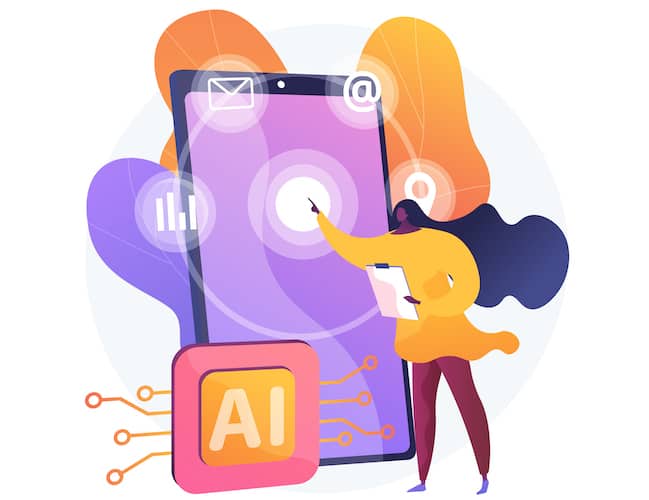
The idea is to finish all the screens, including all the states (pressed and unresponsive buttons, animations, etc.), and arrange the UI assets using a design system so developers can quickly pull it.
Step #5: Build — front-end coding catching up with AI stuff
Finally, we’re ready for coding. We already have the AI algorithms and design. It’s time to breathe life into the app by baking a nice mobile front end.
Fortunately, our developers are already well prepared. They helped us pick the tech stack at the discovery stage, trained the AI models, and consulted designers on edge cases and overall design compliance with iOS/Android guidelines.
All that’s left is to code (add the business logic and ML algorithms behind the UI carcass), but there are a few things to keep in mind:
- Agile development
Agile development implies full transparency (who’s doing what and how fast), regular updates, fresh builds every two weeks, and willingness to adapt based on early feedback or insights. For example, suppose we realize our app absolutely needs a home-screen widget during development. The last thing we want to hear from the team, in this case, is, “Unfortunately, that wasn’t in the scope, milord.”
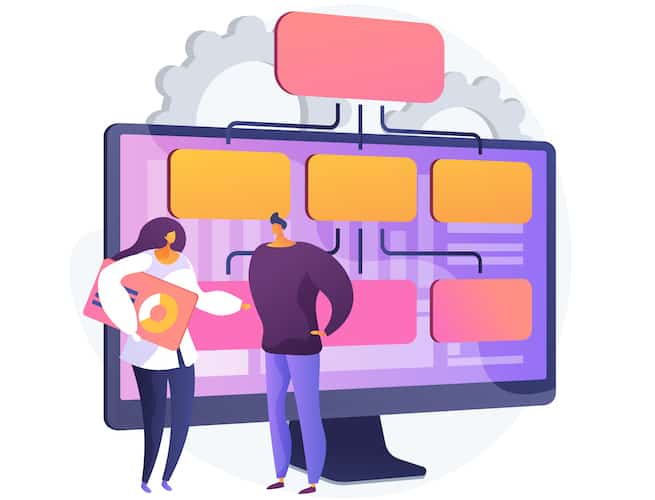
- From-scratch vs. off-the-shelf AI models
If we use ready models, they should be already fine-tuned, and we simply need to plug them into the app. Alternatively, developers may need to train brand-new AI models or create a neural network. And this may go in parallel with the coding of the app’s front end (as it takes longer).
- On-device vs. cloud AI engine deployment
Again, we decide this at the discovery stage as part of the tech stack and the app’s architecture definition. A cloud-based AI deployment is ideal if we plan more front ends on multiple platforms. The on-device scenario can be suitable for an offline mode or when we need extra security and instant output requiring extra-heavy computations. A hybrid model may work for specific use cases, too.
- DevOps is a must
Delivering an app every two weeks doesn’t have to chip away from the development time. We need special tech rails to automatically convert code into a testable (or an App-Store-ready) app in a snap. Remember that we’ll keep adding new features even after releasing the app, so the DevOps infra needs to be in place by then. Developers have more important tasks than constantly baking new builds for testing or release.
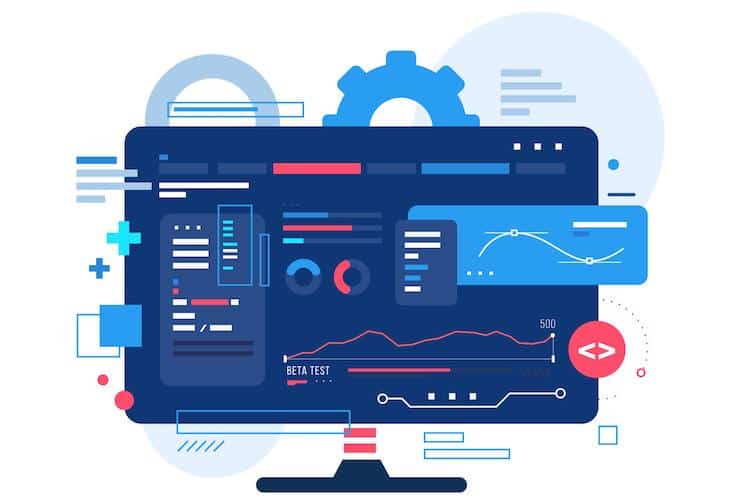
- Ready-made, customizable components for non-critical features
Initially, we’re focused on releasing an MVP with 1-2 key features, right? So double down on building them, and use off-the-shelf components for chat, appointment scheduling, and other run-of-the-mill features by attaching ready components. At Topflight, we can get ready-to-go pieces for HIPAA-compliant authentication, messaging, telemedicine, and scheduling.
Oh, one more thing: I haven’t mentioned that explicitly, but ongoing QA is a natural part of the development process. Automated and manual tests run every time before we get another app version (developers call them “builds”).
Oh, and yet another one: there are plenty of cross-platform AI development tools. So if you want to make an AI app for Android and then use the same technologies for iOS, the chances are that will work out.

Rarely do we find an AI Android app that is not available on iOS and vice versa. Since most AI frameworks are cross-platform, it only makes sense to apply them on all supported platforms.
Step #6: Deployment — flipping on a production environment
This step is elementary: we need to turn on a production environment, meaning a publicly available server infrastructure tested to withstand a user onflow. We run final automated and manual tests on this live environment to catch accidental bugs.
Used to be a nightmare like 6 or 10 years ago, especially if we had to integrate with some legacy software (some part would inevitably fail). However, since we already have a proper DevOps setup, this phase shouldn’t be an issue.
Step #7: Release — we’re going live (do we have any budget left for marketing?)
Uploading mobile apps to the App Store and Google Play is pretty straightforward, especially if you work with people who know the workarounds for accidental rejections during the app review process.
We can also decide to distribute the app via Testflight or use a mobile store’s beta testing program to pilot the app with carefully picked early adopters.
Step #8: Maintenance — we’re killing it
Ideally, we get enough traction to fund the next round of improvements. During this time, we will also keep an eye on how the app performs (slow/fast, bugs, UX issues) and how users interact with it (as planned or accidental new user flows asking for a UX update?).
A thriving AI app will need constant updates; fortunately, we have an agile team and all processes already set up to loop the feedback from this ongoing maintenance phase back into design and development.
And that’s the gist of how we make artificial intelligence apps.
How Much Does it Cost to Make an AI App?
I appreciate your time. So without beating about the bush, our min engagement model starts at $60K — that should work for a stripped-down MVP that uses ready-to-go AI models or neural networks with minimal training.
How Topflight Can Help with AI App Development
We absolutely love working on AI and ML applications for mobile and web platforms. Here are a few examples from our portfolio:
Allheartz
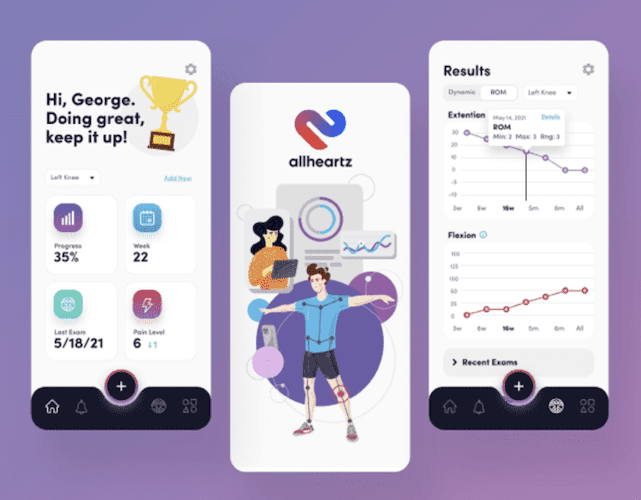
Helps doctors track patients’ recovery; smart algos recognize and analyze patients’ movements (computer vision in action). Please check out the AI case study to learn more.
Xzevn
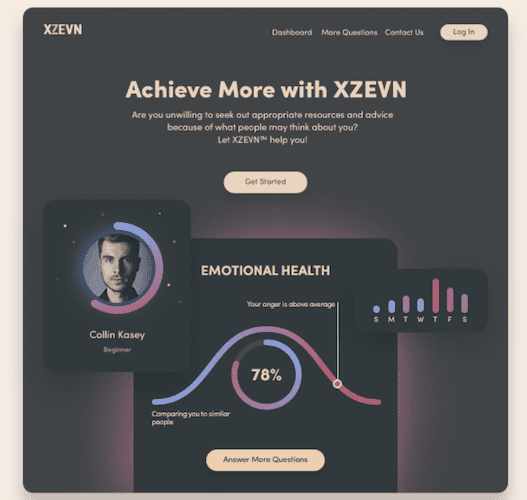
A chatbot for analyzing customers’ sentiments and recommending appropriate content. Please check out the ML case study to learn more.
SMB lending app
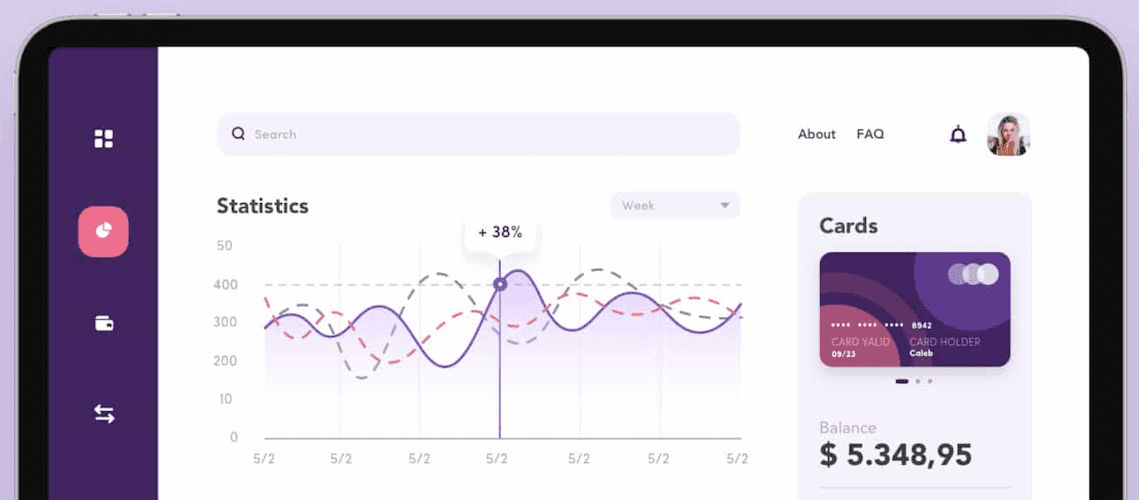
A neural network-based engine for a fintech startup dealing with SMB loans. Please check out the case study to learn more.
Please note that we won’t force AI where it doesn’t belong. Here’s a case study about a chatbot that performs wonderfully (and has raised good money, too) after losing unnecessary AI/ML components.
If you want to create an artificial intelligence app, meet with one of our experts. We’d love to chat with people envisioning the future.
[This blog was originally published on 2/8/2023, and has been updated for more recent content]
Frequently Asked Questions
How does mobile AI development differ from other application development projects?
The need to check algorithms before coding a mobile front-end; you’ll need plenty of test data.
Should I keep AI on-device, in the cloud, or use a combo of these 2 options?
That depends on the amount of data, use cases (offline use?), user security concerns, and many other parameters. It’s something you should discuss with a qualified AI architect.
How can I test a wow AI effect on customers with a prototype that doesn't run actual algos?
Rapid prototyping is still necessary to verify if the design is intuitive and engaging. Once a PoC is ready, you can skin it and continue testing with actual AI running in the background.
What tech stack do you recommend?
Totally depends on your product requirements (connection with legacy systems, throughput, type of data analyzed, yada yada yada). Don’t worry about using a specific tech stack. Make sure the team comprehends your business goals and proposes specific AI technologies for reaching these goals. Then ask why not use some other technologies. You will love the answer, I promise. #Protip: experts choose to work with the stuff they’ve mastered or state upfront that it’ll be an experiment.
How long does it take to build an AI app?
4-6 months for an MVP.

